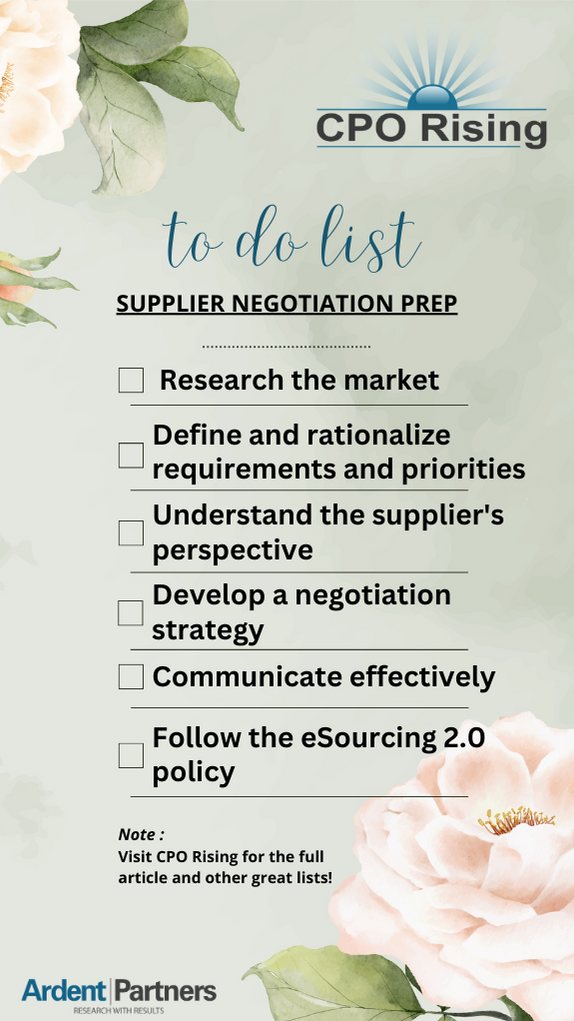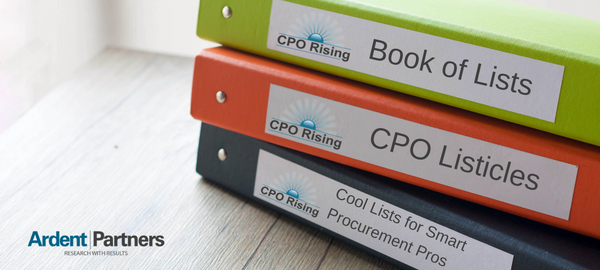Editor’s Note: Over the next few weeks on CPO Rising, we’re publishing some “best of” 2023 articles as we reflect on the year and prepare for the new year ahead.
Fridays (in 2023) means that it’s time for another CPO Rising Listicle. Each list will include a variety of procurement tips, trends, insights, research, lists, strategies, and/or recommendation designed to help procurement teams improve operations. We’ll also include a summary graphic for you to share with your team.
We need more savings is the cry that many CPOs heard last year as they faced down historic inflation rates. In fact, the number of CPOs that had “finding more savings” as a top priority doubled from the previous year. The pressure to find savings will continue in 2023. So, today’s listicle is designed to help sourcing pros find more savings with a helpful supplier negotiation checklist.
Six Things to Help Prepare for a Supplier Negotiation
Every procurement team in 2023 is “shopping” for savings. Here a few items to keep on your list:
- Research the market: Before entering into negotiations with a supplier (or suppliers), it’s important to have a good understanding of the market and the competitive landscape. This includes researching the prices and terms offered by other vendors, as well as any industry benchmarks or trends that may be relevant.
- Define and rationalize requirements and priorities: Clearly define the business’ requirements and priorities beforehand will help you to focus your negotiations and make better decisions. Make a list of the specific terms, conditions, and features that are most important to you, and rank them in order of importance.
- Understand the supplier’s perspective: In order to reach a mutually beneficial agreement, it’s important to understand the supplier’s needs and motivations. This may involve asking questions and gathering information about their business, their products or services, and their pricing and terms.
- Develop a negotiation strategy: Based on your research and understanding of your needs and the supplier’s perspective, develop a negotiation strategy that outlines your goals and tactics. This may include identifying potential concessions or trade-offs that you are willing to make, and planning for potential challenges or obstacles.
- Communicate effectively: Effective communication is key to any successful negotiation. Clearly and concisely express your needs and priorities, and be prepared to listen and respond to the suppliers’ concerns and proposals. Use active listening skills and be open to finding creative solutions that meet the needs of both parties.
- Follow the eSourcing 2.0 policy: Every negotiation that results in an executed contract should be captured electronically, ideally with an eSourcing solution.

RELATED RESEARCH
eSourcing 2.0: Making the Case
Friday Listicle: Five Key Characteristics of a Best-in-Class CPO
Help! My Organization is Too Small to Negotiate with Big Suppliers
How New or Improved Technologies Can Transform Procurement – Supplier Management
Non-Price Attributes – “Who” is the Supplier?


